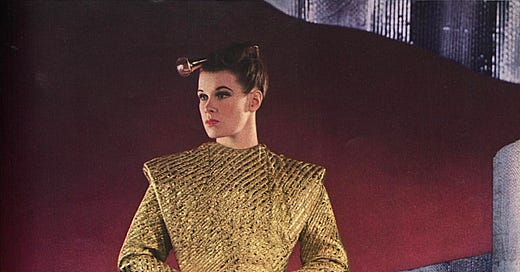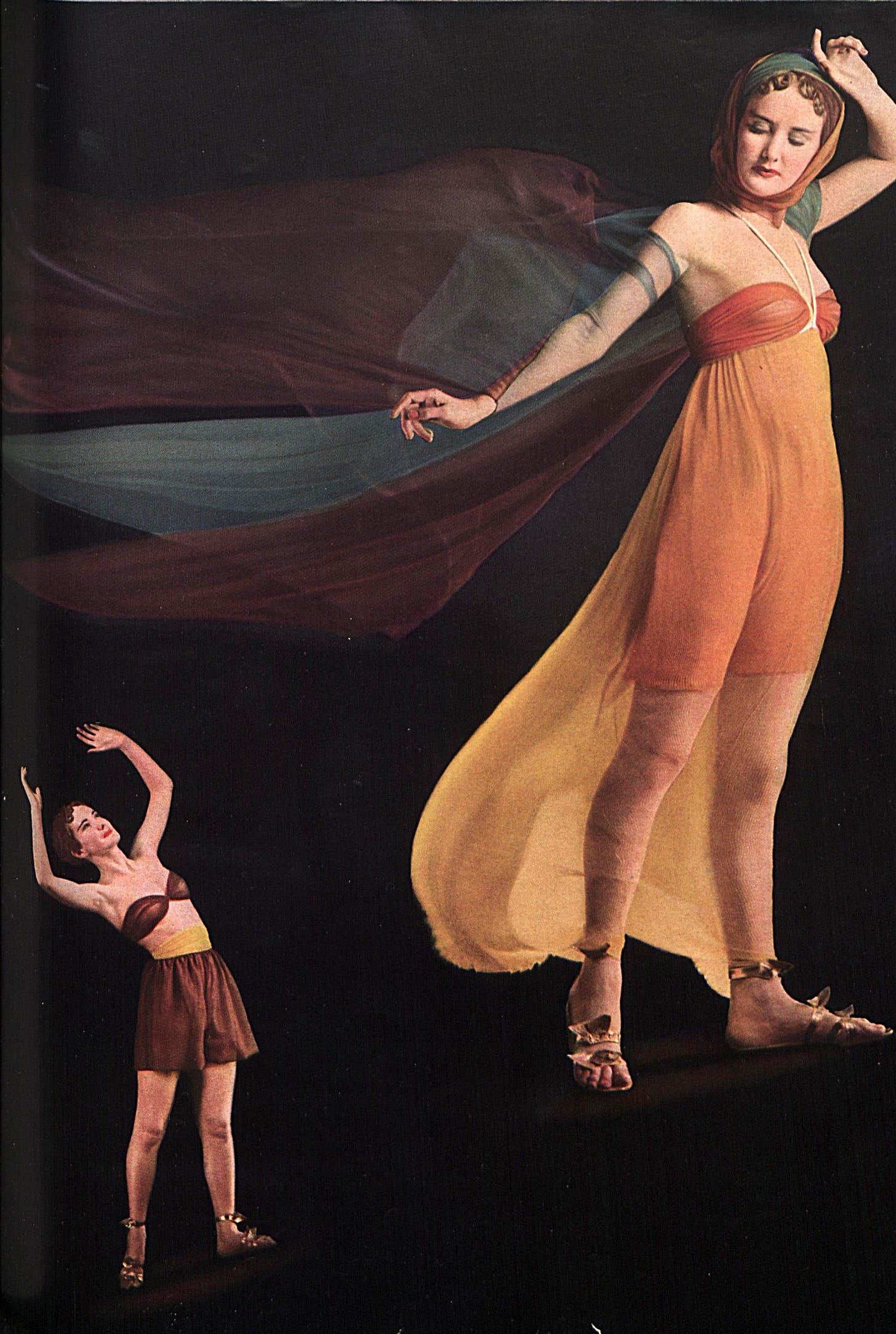Fashions of To-morrow, 1939
Every few years I see someone repost the below 1939 British Pathé newsreel, the voiceover promising “some of the most famous fashion designers in the US today have been asked to forecast what Eve will look like in AD 2000.” Remarkably, no one discusses the reasons why these designs were commissioned nor the errors in the video itself.
For the 1939 New York World’s Fair, Vogue approached nine important American industrial (not fashion) designers and asked them to create a dress for the Woman of the Future. The industrial designers (all men) were Egmont Arens, Donald Deskey, Henry Dreyfuss, Raymond Loewy, Joseph B. Platt, Gilbert Rohde, George Sakier, Walter Dorwin Teague, and Russel Wright. “Some of them admitted that they never had designed anything more frivolous than a locomotive; one of them said he would much rather design a costume for the Man of the Future. The costumes were designed, complete with coiffure, accessories, and suitable ideology. The workrooms of nine leading shops cooperated with the designers in their execution.” These “Fashions of the Future” made their debut at a World's Fair Terrace Club party, and were then shown in department store windows around the city.
The designs were photographed for Vogue’s February 1939 issue by Anton Bruehl, who “interpreted these dresses with a sympathetic understanding and insight into the designers' problem, which we feel will enable our readers to get the full impact of this experiment in prophecy.” The highly-saturated images were published alongside treatises from each designer, explaining their approach and predictions for the future. While the work of these designers is still deeply woven into our everyday lives (after all, Loewy redesigned the Coca-Cola bottle and Egmont Arens’ design for the Kitchenaid Stand Mixer is still in production today), they are very much men of their period, with at times backward ideas about womanhood and feminity. Regardless, these unique approaches to the question of future clothing are worth a read—most notably for the belief in technology and new fibres/textiles.
All text below from Vogue, February 1939. Spelling and grammar have been retained from the original.
DONALD DESKEY FORESEES A GREAT EMANCIPATION
Bodies scientifically beautified. No underwear. No purses—credit instead of money. Flat heels. Clothes decorative, not utilitarian. A wardrobe that's a system of chiffon units. In the morning, shorts and a halter. Afternoon, a short skirt. Evening, a long skirt.
Keep reading with a 7-day free trial
Subscribe to Sighs & Whispers to keep reading this post and get 7 days of free access to the full post archives.





